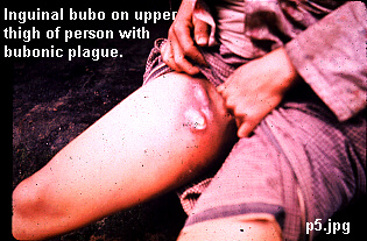Specimen Source

May be isolated from
- Blood
- Sputum (A patient presenting with pneumonia plague usually has bloody sputum.)
- Bronchial washings
- Spleen
- Liver
- Bubo aspirates
These specimens present an exposure risk to the laboratorian.
Gram Stain

Gram-negative bacilli (0.5 to 0.8 by 1 to 3 microns), single or short chained. Sometimes bipolar staining (“closed safety pin”).
Note: The safety pin appearance is best observed in direct smears of infected specimens. All bipolar staining cells are not Yersinia pestis.
Additional Stains
The Wayson and Wright-Giemsa stains are used to detect the safety pin appearance. These stains provide contrast staining so that bacteria, tissue, and blood cell components are easily seen.


Colony Characteristics
The Wayson and Wright-Giemsa stains are used to detect the safety pin appearance. These stains provide contrast staining so that bacteria, tissue, and blood cell components are easily seen.
Key Characteristics
- Gram-negative bacilli, possible bipolar staining and a “safety pin” appearance.
- Nonhemolytic
- Growth is faster at 25 to 28 degrees C than at 35 to 37 degrees C.
- At 48 to 72 hours the colonies on sheep blood agar have a “fried egg” appearance.
- Catalase positive.
- Nonmotile at 35 to 37 and 25 to 28 degrees C.
- Oxidase negative.
- Urease negative.
- Nitrate-reduction negative.
- Clumped growth in broth at 25 to 28 degrees C (stalactite appearance).
Identification pitfalls to avoid:
Y. pestis is included in the databases of most, but not all, enteric identification systems.
Any time a blood or sputum culture appears to be Shigella, suspect Y. pestis. Some commercial systems may confuse Acinetobacter, Shigella and hydrogen sulfide negative Salmonella with Yersinia. If you are looking for Yersinia and identify one of these organisms, review the major characteristics for Yersinia pestis.
Safety
- Use biosafety level 2 practices for specimen processing and activities involving clinical material collection and diagnostic quantities of infectious agents.
- Use biosafety level 3 for activities with potential for aerosol or droplet production.
